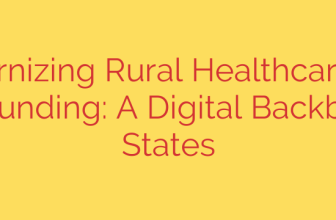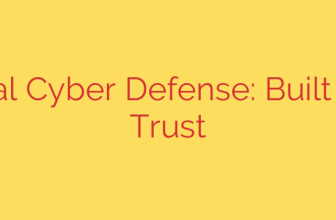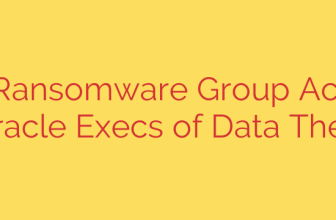
Biotech’s Hidden Danger: Why Basic Security Failures Put Critical Research at Risk
The world of biotechnology is at the forefront of human innovation. From gene editing and personalized medicine to developing life-saving vaccines, the work being done in digital laboratories is nothing short of revolutionary. However, a startling gap is emerging between the cutting-edge science being conducted and the primitive security protecting it. Groundbreaking research platforms, which house some of the world’s most sensitive data, are frequently failing to implement even the most basic cybersecurity measures, leaving them wide open to attack.
This isn’t a niche problem affecting a few startups; it’s a systemic vulnerability that puts valuable intellectual property, sensitive patient data, and the very integrity of scientific research in jeopardy. The reality is that many biotech platforms are more focused on scientific discovery than digital defense, creating a perfect storm for cybercriminals and state-sponsored actors.
The Core of the Problem: Common and Alarming Security Lapses
The security flaws discovered in many biotech and research platforms are not complex, zero-day exploits. Instead, they are fundamental security oversights that have been standard practice in other industries for years.
The most common and concerning failures include:
- Weak Password Requirements: Many platforms permit the use of simple, easily guessable passwords like “password123” or “12345678.” They often lack requirements for complexity (a mix of letters, numbers, and symbols) or minimum length, making it trivial for attackers to gain access through brute-force attacks.
- Lack of Multi-Factor Authentication (MFA): MFA adds a critical layer of security by requiring a second form of verification, such as a code sent to a phone, in addition to a password. Its absence is a significant red flag. The failure to implement MFA is arguably the single biggest and most easily fixed vulnerability, yet it remains shockingly uncommon across many research platforms.
- Insecure Account Recovery: Systems that allow users to reset their passwords without adequate verification open another door for attackers. If a threat actor can easily take over an email account, they can then seize control of the linked biotech platform account with little resistance.
- Exposing User Information: Basic enumeration vulnerabilities can allow bad actors to easily confirm valid usernames or email addresses associated with the platform. This information is invaluable for launching targeted phishing campaigns and other focused attacks against researchers and staff.
Why Biotech is a Prime Target for Cyberattacks
Attackers are highly motivated to target the life sciences sector due to the immense value of the data it holds. Understanding their motives clarifies the severity of the threat.
- High-Value Intellectual Property (IP): Research on new drugs, proprietary genetic sequences, and innovative medical devices can be worth billions of dollars. Competitors or nation-states can save years of R&D and enormous expense by stealing this data.
- Sensitive Patient and Genetic Information: Biotech firms and research institutions often store a treasure trove of Protected Health Information (PHI) and genetic data. This is some of the most personal data in existence; unlike a stolen credit card, it cannot be changed. This data can be used for blackmail, fraud, or sold on the dark web for a high price.
- Geopolitical Competition: Nation-states are actively engaged in cyber-espionage to gain an economic or strategic advantage. Stealing groundbreaking biotech research is a national security priority for many countries, giving them an edge in public health, biodefense, and economic development.
A Security Checklist: Fortifying Your Digital Lab
The good news is that addressing these vulnerabilities does not require reinventing the wheel. It requires a commitment to implementing fundamental security best practices. If you work in the biotech or research field, it is crucial to advocate for and implement these measures.
Here are actionable steps every organization should take immediately:
- Mandate Multi-Factor Authentication (MFA): This should be non-negotiable for all users, especially those with access to sensitive data or administrative controls. It is the single most effective step to prevent unauthorized account access.
- Enforce Strong Password Policies: Implement and enforce a policy that requires long, complex passwords. Consider using a passphrase model and integrate tools that check against lists of known compromised passwords.
- Conduct Regular Security Audits: Proactively look for vulnerabilities. Hire third-party penetration testers to simulate real-world attacks and identify weak points in your platform and internal network before criminals do.
- Implement the Principle of Least Privilege: Ensure that users only have access to the data and systems absolutely necessary for their jobs. This limits the potential damage an attacker can cause if an account is compromised.
- Train Your Team: The human element is often the weakest link. Regular training on phishing awareness, social engineering, and secure data handling practices can transform your staff from a liability into a line of defense.
- Encrypt All Sensitive Data: Data should be encrypted both “at rest” (when stored on servers) and “in transit” (when moving across a network). This ensures that even if data is intercepted, it remains unreadable.
Ultimately, the biotech industry must undergo a cultural shift. Security can no longer be an afterthought or a checkbox to be ticked. It must be woven into the fabric of every process, from software development to lab operations. The future of medicine and science depends on it. Protecting groundbreaking research is just as important as conducting it.
Source: https://www.helpnetsecurity.com/2025/10/02/biotech-security-gaps-report/








